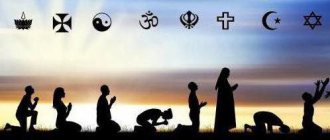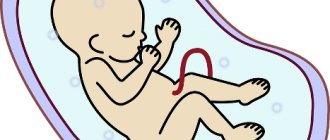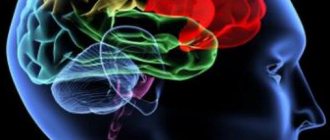Author of the material:
Igor Lyadsky
Geneticist, writer, business coach, Doctor of Philosophy (PhD).
In everyday life, words are often used that can simultaneously be considered a process and its result - self-improvement, self-knowledge. Development is the same example of dualism. On the one hand, it determines the mechanism for achieving a specific task. On the other hand, development is the ultimate goal, an opportunity to become better. This process takes place in living and inanimate nature. People, businesses, and the whole society are subject to its laws. What is development? What are its signs? What mechanisms and stages? The article contains answers to all these questions.
What is development?
Development is a transition to a qualitatively new level. It is inherent in any form of existence of matter. Moreover, these forms themselves are the result of the evolution of the Universe. At the intersection of science and philosophy, it is customary to talk about the following stages of self-organization of matter:
- Mechanical – space;
- Physical – fields and atoms;
- Chemical – molecules;
- Biological – living organisms;
- Socio-social – human society.
Development takes place at each stage. The solar system is developing, chemical compounds are becoming more complex, living beings are evolving, humans are improving, and the historical progress of society is being observed.
The main mechanism is the accumulation of quantitative changes that lead to a qualitative leap. The famous German philosopher Georg Wilhelm Friedrich Hegel also spoke about this.
For example, the transition of water to steam. When it reaches the boiling point, more active molecules gradually appear and evaporate from the liquid. In living nature, evolutionary changes can be considered an example of development. They arise in response to a certain number of accumulated beneficial mutations. Thus, a bird hatched for the first time from a dinosaur egg.
Parallels can be drawn with human life . Gradually, he acquires skills, knowledge and experience that allow him to move to a qualitatively new level. So, a novice boxer, if he shows diligence, eventually becomes the champion of the region, country, and subsequently, possibly the world. But unlike previous forms of existence of matter, man has reason and will. Therefore, human development is a more complex process, which is complemented by comprehension and the possibility of choice.
Take a personality type test
Interdependent processes
Development is the product of a complex interaction of biological, psychological and social influences. As children develop physically, gaining greater psychomotor control and increasing brain function, their cognitive processes become more complex, meaning they become more adept at thinking and influencing their environment. These physical and cognitive changes, in turn, enable them to develop psychosocially, developing an individual identity and interacting effectively and efficiently with others. Thus, as described, human development is a lifelong process of growth, maturation and change.
Stages of human development.
Do you want to make better decisions, find your ideal career, realize your maximum potential and receive instructions for individual development?
?
All this can be done using the Human Design
. Build your map and get basic transcripts for free.
There are biological and social aspects. In the first case, we are talking about the development of a person as a living organism with the passage of all stages from conception, birth, life and death. The second case involves the socialization of the individual. In addition, a person is inclined to engage in self-development, choosing the direction that is truly interesting to him. Let's consider all cases in detail.
Psychophysiological development of a person.
In the process of his development, a person goes through a number of natural stages (physiological and psychological):
- The intrauterine period – the appearance of all systems and organs;
- Infancy – from birth to 1 year of age;
- Early childhood – from one to three years;
- Preschool period - on average up to 7 years;
- Junior school age – from 7 to 12 years;
- Adolescence – up to 15 years;
- Youth – up to 19 years old;
- Youth – covers the period from 19 to 35 years;
- Adulthood (maturity) – 35-60 years;
- Old age – from 60 years.
If the intrauterine development of a person is the sphere of embryology, then further life is carefully studied by psychologists and physiologists. So, psychologists made a great contribution to understanding the formation of personality in various periods of human development: Pavel Petrovich Blonsky, Lev Semenovich Vygotsky, Erik Homburger Erikson, Danil Borisovich Elkonin, Alexey Nikolaevich Leontiev.
According to the ideas of psychoanalysis, formed by Sigmund Freud, in his formation a person depends on the zones that cause the greatest pleasure in a particular period of life. According to these views, there are the following stages of human development:
- Oral – from birth to one and a half years, when the mouth is the main way to satisfy organic needs;
- Anal – the period from 1.5 to 3.5 years, when the child learns to control the process of bowel movements;
- Phallic – age from 3.5 to 6 years, when gender identification occurs;
- Latent – a period from 6 to 12 years, manifested in a decrease in sexual activity;
- Genital – a transitional age, which is expressed in the formation of mature sexual relationships.
Since man is a biosocial phenomenon, developmental psychology cannot be based only on the physiological characteristics of the individual. The formation of his personality also plays an important role in the formation of a person.
Stages of personality development.
Improving the spiritual sphere of a person, his desire for self-knowledge and choosing his calling, can be compared with Abraham Maslow’s Pyramid of Needs. According to this approach, the development of a person as an individual moves in the following direction:
- Physiological needs - food, drink, sex;
- Security need - the desire to be protected;
- The need for love and friendship is socialization;
- The desire for respect - recognition, approval, veneration;
- Gaining knowledge - the desire to know and understand more;
- Aesthetic needs - a feeling of beauty and harmony;
- Self-actualization is the highest form of self-development.
In the process of his development, a person strives for spiritual perfection, but this becomes possible only if lower needs are satisfied. A homeless person is unlikely to appreciate a gift of a ticket to the opera. A person running away from an angry crowd has no time to listen to another smart audiobook. A teenager would rather choose a walk with an older classmate than professional growth and self-development. Each period of development implies its own strategy of behavior and ultimate goal.
Considering the dual nature of man and his ability to establish communication with other representatives of his species, it is appropriate to talk about the development of a group of people united by common goals. First of all, these are labor collectives of various private and public companies. They are also improving. We will consider the stages of development of the organization in the next section.
Take a character test
Body types
The individual characteristics of a person’s body shape are called body type or constitution. This is a complex of individual morphological and physiological characteristics that develop in certain social and natural conditions and are manifested in the body’s reactions to various influences. The external structure of the body corresponds to a certain arrangement of organs and their internal structure. There are 3 types of human physique: dolichomorphic, brachymorphic and mesomorphic.
Asthenic type People of the dolichomorphic (asthenic) type are distinguished by high or above average height, a relatively short body, small chest circumference, narrow shoulders, and long lower limbs. Among literary heroes, Don Quixote can be classified as this type. Such people have relatively poorly developed muscles and subcutaneous fat. The internal organs usually lie lower, as if lowered, the lungs are longer, and the heart is located almost vertically.
Hypersthenic type The brachymorphic (hypersthenic) body type is characterized by average or below average height, a relatively long torso, significant volume of the chest and abdomen, broad shoulders, and short limbs. Example: Sancho Panza. The internal organs of hypersthenics are relatively larger than those of asthenics and lie slightly higher. The lungs are shortened, the heart is located almost horizontally.
Normosthenic type People of the mesomorphic (normosthenic) type occupy an average position in their proportions.
Development of the human team.
Any team, one way or another, goes through the following stages (according to the theory of Bruce Wayne Tuckman):
- Checking (forming) – “probing” each other;
- Conflict – the emergence of contradictions, their aggravation;
- Cohesion (normalization) – reconciliation based on conflict resolution;
- Differentiation (execution) – formation of a functional role structure.
These principles are universal in work teams and voluntary associations of people of interest. If we talk about the development of an organization related to solving a specific business problem, we can distinguish the following periodization:
- Task orientation;
- Emotional understanding of the task, search for inconsistencies;
- Information exchange, analysis of ideas and proposals;
- Solving a problem by making constructive decisions.
Considering that any company is like a living organism, it is customary to talk about the life cycle of an organization:
- Formation – development of a strategy and development plan;
- Growth – increasing turnover, increasing indicators;
- Maturity – stabilization of the structure;
- Decline – accumulation of organizational problems, stagnation.
At the end of its life cycle, an organization can take several paths. Either it undergoes a rebranding, forming new tasks and goals, or it closes, giving way to other companies at earlier stages of development.
Not all management systems try to combine the development of the organization and the individual improvement of its employees. Indicative in this regard is the Japanese management philosophy of Kaizen, which promotes the continuous development of the company through the cumulative progress of all its elements. First of all – each of the employees. In general, the topic of development and self-development is very relevant in a dynamically developing world.
Consequences
The importance of physical, cognitive and psychosocial development becomes apparent when a person fails to successfully meet one or more developmental milestones. For example, a child who fails to achieve physical developmental milestones may be diagnosed with developmental delay. Likewise, a child with a learning disability may not be able to cope with the complex cognitive processes of a typical adolescent. A middle-aged adult who fails to successfully resolve Erikson's stage of fertility versus stagnation may experience "profound personal stagnation, masked by a variety of escapisms such as alcohol and drug abuse and sexual and other problems." Thus, it is important for all people as they navigate the developmental challenges they face at every age.
Human development
Personal development and self-development.
When a person is born, he is like a blank sheet of paper. Of course, in the initial stages of life, the intervention of adults is necessary, who initiate the development of a person’s personality. But this help is fraught with pitfalls. The fact is that sometimes calling is completely different from the path that society imposes.
Family, school, university do not always provide the knowledge and skills that a particular person really needs. What to do in this case? Growing up, a person feels these inconsistencies and tries to compensate for the missing experience through self-education and self-education.
For example, a hereditary jeweler, realizing that precious metals or stones are not his vocation, is looking for more suitable ways of development. He re-reads dozens of books, watches hundreds of themed programs and finally understands that he wants to become an artist. Since his family does not help him in this, he engages in self-development, gradually becoming a painter.
History of origin
Until the 18th century, it was believed that human origin was divine. However, in the middle of the century, Carl Linnaeus, in his work “The System of Nature,” classified man as an animal . This is how the theory of human belonging to the order of primates was born. By the beginning of the 19th century, scientists had accumulated a sufficient amount of paleontological and archaeological materials, which gave rise to the theory of anthropogenesis.
However, for a long time no one dared to deny the idea of divine intervention. The ideas of Charles Darwin revolutionized this issue. He first raised the question of the biological evolution of people as a species. In the first half of the 19th century, the science of paleoanthropology was born. This was facilitated by the discovery of the skeleton of a Neanderthal, a representative of an extinct species of the human race.
The transitional form between man and ape was expected to be found in Africa. However, a message about the discovery of the remains of an ape-man came from the island of Java. The individual to which the skeleton belonged was named Pithecanthropus. He belonged to the genus Homo erectus.









